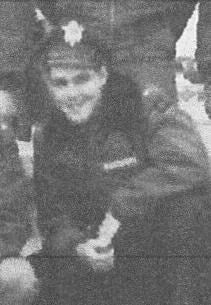- Second Lieutenant
- WW II
Biography
Charles (Bev) Beverly Coutts was born in Marlborough, New Hampshire in 1924. He was the son of William and Ida May Coutts. Bev graduated from Marlborough High School, Marlborough, New Hampshire, in June 1942, where he was an outstanding scholar and athlete. Bev was a member of the varsity basketball and soccer teams. He was also an outstanding baseball player with the potential to play professionally. He entered Rhode Island State College (RISC) in September 1942 with the class of 1946 where he participated in the Army ROTC program. Bev left RISC after one year and enlisted in the US Army Air Forces Aviation Cadet Program.
Private Charles B. Coutts graduated from the ten-week U.S. Army Air Forces preflight training program, a combination of enlisted basic training and the officer candidate school. He was assigned as a cadet at The Flying/Bombardier Cadet Training Program, U.S. Army Air Force Bombardier School (“Bombardier College”), Midland Army Airfield, Texas. The 18 weeks of bombardier training consisted of practice bomb drops, both in daytime and at night, in the Beech AT-11 aircraft. Upon completion of bombardier school, he was awarded his Bombardier Silver Wings, commissioned a Second Lieutenant and assigned to the 39th Bombardment Group (H), 61st Bomb Squadron. The squadron entered combat in April 1945 flying the Boeing B-29 Superfortess from North Field, Guam, Pacific Theater, as part of the Twentieth Air Force.
On 28 April 1945, the 61st Bomb Squadron, composed of twelve B-29s with 2LT Coutts as the bombardier for Crew-26 flying B-29 # 44-69895, took off from Guam on a bombing mission to destroy the Kushira Airfield in mainland Japan. The Kushira Airfield was a known location where Japanese Kamikaze planes were stationed. The weather was clear and strike photographs indicated the potential for good to excellent results. Enemy opposition was the heaviest encountered on any previous bombing runs. There were approximately 50 Japanese Zeros present in the target area, and the enemy pressed 30 to 40 attacks on the formation. Gunners shot down nine enemy aircraft during the battle.
LT Rowland Ball, Navigator of Crew-3 (City of Montgomery), recalls the loss of 2LT Charles B. Coutts and Crew-26:
“After dropping our bombs, we noticed a lone Japanese plane that was out of our range in front of us. Then he turned and headed right for our formation. As soon as he got within range, all the gunners in the flight opened up on him. As he got closer, he was hit; and his plane rolled to the left of us, and we could see he was going to miss us. But, this threw him right into Crew-26’s plane; and he hit them and took off about six feet of the right wing of the B-29. The pilot, LT Alexander Orionchek, of Crew-26’s plane did a super job of ditching. With part of his right wing gone, he got the plane down without crashing. We went down right after to kick out our emergency gear. I called the nearest submarine, but they were all 50-75 miles away. We flew low and could see the guys climbing out of the pilot’s window. We kept circling until they got into life rafts and waited for a submarine to show up. We were beginning to get low on fuel, and we still had about eight hours of flying time left to get back to Guam. We hated like the devil to go off and leave them, but we had no other choice. So, we waggled our wings at them and departed for home. When rescue teams arrived the next day, there were no signs of the crew. I am sure that Japanese planes came out after the raid and strafed the downed crew and killed them. The Japanese usually would send out planes after a raid to look for downed airmen and shoot them.”
Second Lieutenant Charles B. Coutts was cited for Gallantry in Action and awarded the Purple Heart and the Air Medal (Posthumously). LT Coutts is listed on the Tablets of the Missing at the National Memorial Cemetery of the Pacific, Honolulu, Hawaii. As a memorial, his family placed his name on a grave stone in the family plot in Pine Grove Cemetery, Marlborough, NH.
Second Lieutenant Charles B. Coutts, U.S. Army Air Forces, was a hero in defeating the Japanese in World War II. He was another son of Rhode Island State College and America who answered the call to duty and gave his life in service to our country. He is a heroic member of the “Greatest Generation.”
Education
1946

